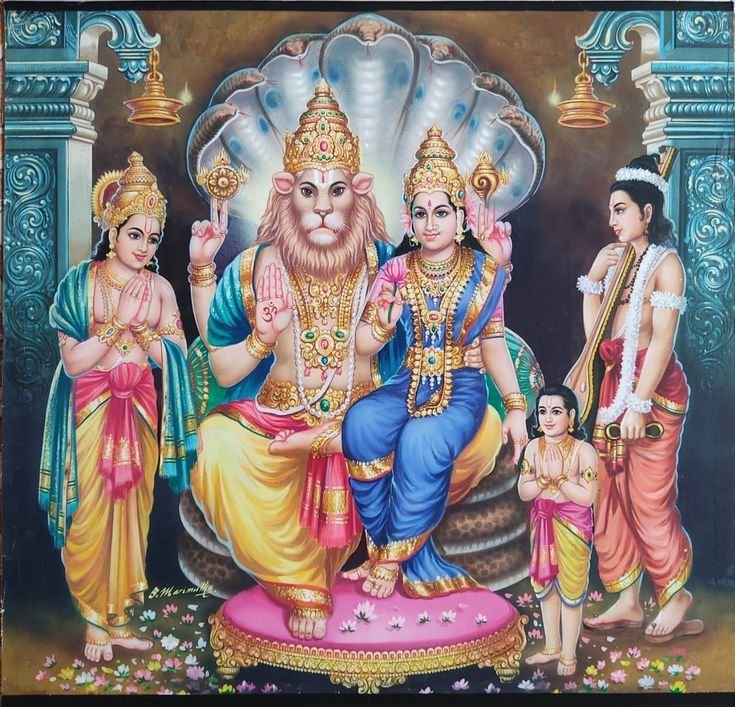Sri Lakshmi Narasimha karunarasa stotra
Sri Lakshmi Narasimha karunarasa

Sri Lakshmi Narasimha Karavalamba Stotram (also called Lakshmi Narasimha Karunarasa Stotram) is a sacred hymn composed by the great sage‑philosopher Adi Shankaracharya, in deep devotion to the form of Lakshmi‑Narasimha — Vishnu’s half‑man, half‑lion incarnation (Narasimha), accompanied by his consort Lakshmi.
The word Karavalamba means “lend me your protecting hand,” and “Karunarasa” refers to the “essence of mercy,” so each of the 17 verses ends with the refrain “Lakshmi Nrsimha Mama Dehi Karavalambam” — “O Lord Lakshmi‑Narasimha, grant me your hand of protection.” From the very start, the hymn sets a tone of humble surrender and urgent plea: recognizing Lakshmi‑Narasimha as the refuge from suffering, the protector of devotees, and the destroyer of fear and adversity.
Its imagery is rich: the Lord is described as dwelling in the “ocean of milk,” adorned with the discus (Sudarshana chakra), wearing the gem‑decked serpent Ananta (Adhisesha), the source of merit, the rescue of sages, the boat to cross the ocean of worldly misery. In various verses the devotee acknowledges fears born of samsara (worldly existence), the torment of desire, the heat of envy, the burden of sin, and the darkness of ignorance.
In each, the refrain reminds the devotee: in such predicament, shelter comes only through the Lord’s compassionate hand. Over time this stotram has become treasured among Vaishnava devotees for its ability to calm inner fear and anger, pacify one’s mind, and bring peace into the home when chanted with faith and regularity. The hymn does not merely extol divine power in mythic acts; more importantly, it emphasizes personal transformation — the devotee’s inner fear, ego, and ignorance are to be brought under the Lord’s merciful gaze. It’s a prayer of surrender: not requesting material gains primarily, but seeking protection, grace, inner purity, and spiritual endurance.
Also, it is said to pacify the fierce, “ugra” aspect of Lord Narasimha, turning it into a compassionate presence. In terms of structure, the stotram is methodical: each verse paints a facet of the divine — form, attributes, cosmic role, compassionate response — and then the refrain brings it back to the devotee‑Lord relationship. Reciting it is believed to uplift the devotee’s consciousness, reduce fear, anxieties, anger, inner conflict, and bring serenity.
When one chants Lakshmi Nrsimha Mama Dehi Karavalambam with sincerity, it is said that the mind becomes stabilized, the heart calmed, and protection is felt not just externally but in one’s inner life. Thus the Karunarasa Stotram stands as both a devotional masterpiece and a spiritual balm: in seeking Lakshmi‑Narasimha’s hand, the devotee seeks refuge, redemption, and renewal.





















































